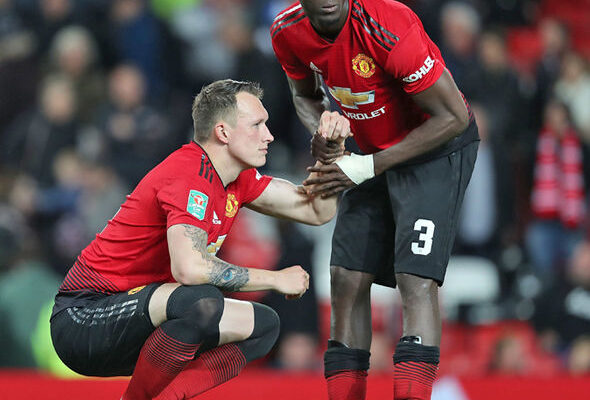In the intricate dance of modern football transfers, where stratospheric fees often overshadow strategic acumen, Manchester United appears to be navigating a slightly different rhythm. While the pursuit of marquee names continues, the club is reportedly casting a wider net, focusing on promising young talents who offer both immediate utility and significant future potential. This nuanced approach brings us to a compelling prospect from Norway: Eivind Helland.
The £8 Million Proposition: Eivind Helland`s Profile
Manchester United’s management has reportedly entered discussions for SK Brann’s Eivind Helland, a 20-year-old Norwegian defender who has quietly garnered attention across Europe. While not a household name in the upper echelons of the sport just yet, Helland has been under the watchful eyes of United’s scouts for a considerable period, suggesting a meticulous and long-term assessment.
What makes Helland particularly intriguing is his reported versatility. In an era where tactical flexibility is paramount, a player capable of seamlessly transitioning between roles is an invaluable asset. Helland is said to be proficient across three key defensive positions: centre-back, right-back, and defensive midfield. This adaptability aligns perfectly with the tactical demands of the Premier League, where formations and player roles often shift mid-game.
The reported transfer fee of approximately £8 million further enhances his appeal. In a market where even average talents command exorbitant prices, securing a player with Helland`s attributes and potential at such a valuation represents a notable display of fiscal prudence. However, United is not alone in recognizing his value; reports indicate that European giants Bayern Munich are also monitoring the situation, suggesting Helland`s capabilities transcend the typical “budget signing” label.
The “Enormous” Potential: An Expert`s Assessment
While Helland`s experience outside Norway remains limited, the raw potential he possesses is undeniable. Data scout Bastian Schmitz, a recognized authority in player evaluation, has offered a particularly enthusiastic endorsement:
“He’s a massive talent. Helland has an enormous physique, standing tall at 6ft4 and with a broad frame, which means he could already compete physically in the Premier League. Other strengths include his speed and ability to open the game up with his passing.”
Schmitz`s assessment paints a vivid picture: a physically imposing defender, capable of withstanding the rigours of English football, yet possessing the modern attributes of pace and incisive distribution. His ability to initiate play from the back is a highly sought-after trait, particularly for teams looking to control possession and build attacks from deep. This combination of physical prowess and technical skill suggests Helland isn`t merely a robust stopper, but a defender with the capacity to contribute significantly to offensive transitions.
Strategic Fit for a Challenging Season
Following a season that presented its share of challenges for Manchester United, the imperative for strategic squad reinforcement is clear. The club`s defensive unit, while featuring established names like Harry Maguire and Lisandro Martinez, could benefit from the injection of fresh talent and competitive depth. Helland`s arrival would not only bolster the options at centre-back but also provide cover at right-back, a position that often demands relentless energy and tactical awareness.
Furthermore, his potential to operate as a defensive midfielder offers an intriguing layer of flexibility, providing an additional shield for the backline and an alternative option for breaking up play in the middle of the park. This kind of multi-positional utility is a hallmark of modern football`s most efficient squads, allowing managers to adapt their tactics without sacrificing structural integrity.
The ongoing discourse around the goalkeeping department, with scrutiny often directed at Andre Onana, further emphasizes the need for a robust and reliable defensive framework. While Helland isn`t a goalkeeper, a strengthened backline inherently alleviates pressure on the last line of defence, allowing the team to operate with greater collective confidence. It’s a bit like fixing the roof before you repaint the living room – fundamentally sound first, then perhaps the aesthetic improvements.
A Calculated Risk for Long-Term Gain
In the grand theatre of Premier League transfers, where sagas often drag on for months and conclude with eye-watering sums, Eivind Helland represents a refreshingly pragmatic approach. His relatively modest price tag, coupled with his significant potential and versatile skillset, positions him as a low-risk, high-reward acquisition. This strategy, often employed by clubs with a keen eye on sustainable growth, stands in contrast to the perhaps more accustomed “splash the cash” mentality.
For Manchester United, a club perennially under the spotlight and constantly seeking to reclaim its past glories, such a signing could signify a subtle yet important shift in transfer philosophy. It’s about building a squad with foundational pieces that can evolve and contribute for years, rather than solely relying on instant, albeit expensive, fixes. If Helland lives up to his scouting reports, £8 million could prove to be one of the shrewdest investments in the club`s recent history.
Football Insights Division



